Motor Vehicles
Square-Wheeled Tank
In 1957, Albert Sfredda secured a patent (No. 2,786,540) for a square-wheeled tank. He explained: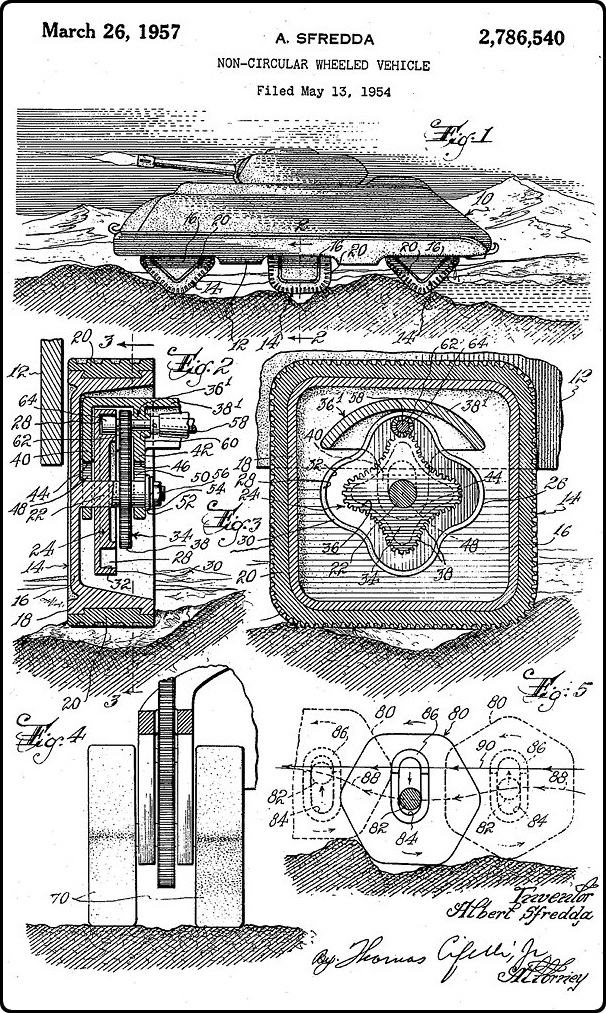
Sfredda was correct that square wheels would provide better traction on rough terrain than circular wheels would. The video below explains why. But the problem, of course, was that his tank would have difficulty moving on a regular, flat road.
Along similar lines, Macalester College has had a square-wheeled bicycle on permanent display since 1997. More info: macalester.edu
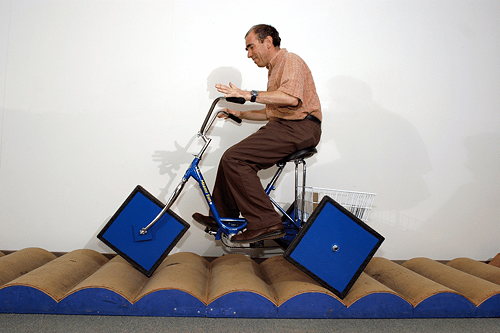
image source: StanWagon.com
Posted By: Alex - Wed Jul 21, 2021 -
Comments (2)
Category: Motor Vehicles, War, Weapons, Patents, 1950s
The Jiger
My 2 favorite parts of this video: when they launch off a ramp into water; and the vaguely retro-porn-style musical score that someone added.Wikipedia says this was the very first ATV.
Posted By: Paul - Fri Apr 16, 2021 -
Comments (8)
Category: Motor Vehicles, 1960s
10-Four, Good Buddy Board Game
Did any fad ever evaporate as quickly as CB radio?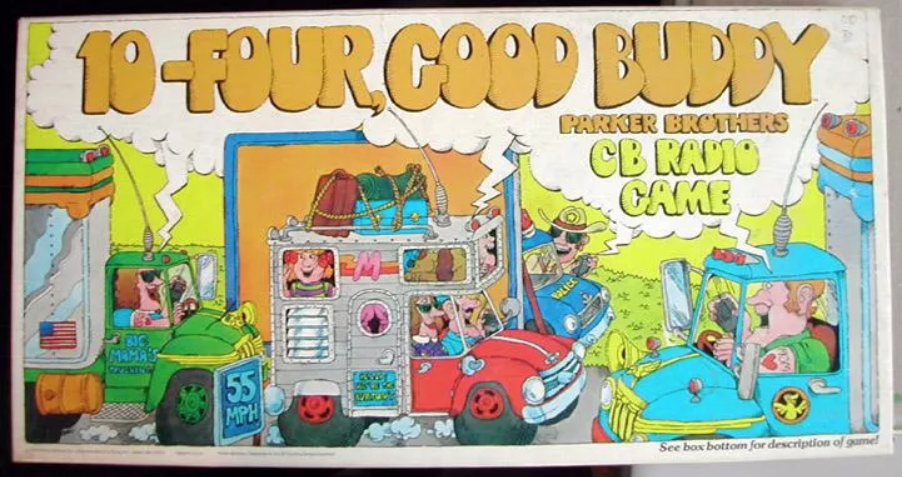
Learn details here.
Posted By: Paul - Sat Apr 10, 2021 -
Comments (3)
Category: Fads, Games, Motor Vehicles, Technology, 1970s
Follies of the Madmen #503
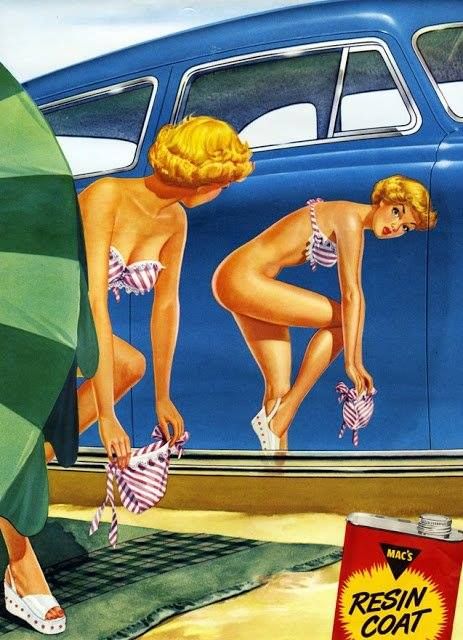
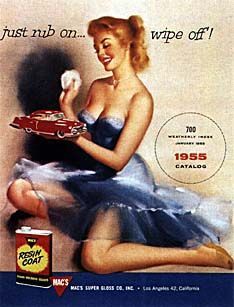
Posted By: Paul - Wed Mar 24, 2021 -
Comments (1)
Category: Business, Advertising, Motor Vehicles, Sexuality
Getaway
Getaway, by Ronald George Eriksen 2 (is the '2' an alternative form of Jr.?), offers instruction on evasive driving techniques. Or, as he says, how to handle a car in the event that someone tries to kill or kidnap you while you're in the car. It was published by Loompanics in 1983, but you can read it for free at archive.org.
In it, you'll find tips such as how to make a smoke screen blow out of your exhaust:
Also, how to do a bootlegger's turn:
(2) Get off the gas and crank the steering wheel to the left ¼ to ½ of a full turn. At the exact same time, hit the emergency brake hard. Those of you with manual transmissions will have to depress the clutch, also.
(3) When your vehicle is at approximately 90 degrees, release the emergency brake, step on the gas, and straighten out the steering wheel. If you have a manual transmission, you will have to let the clutch back out as you are hitting the gas.
(4) Get out of the area fast.

Bootlegger's Turn
Posted By: Alex - Wed Feb 24, 2021 -
Comments (5)
Category: Motor Vehicles, Cars, Books
The Traveling Candy Store
I must confess that the notion of a vehicle that brings candy directly to you had never occurred to me before. But what a great idea!Here's the tale of a modern incarnation.

Here's their website, with an itinerary.
And here's the tale of someone who had the idea 100 years ago! (Scroll up.)
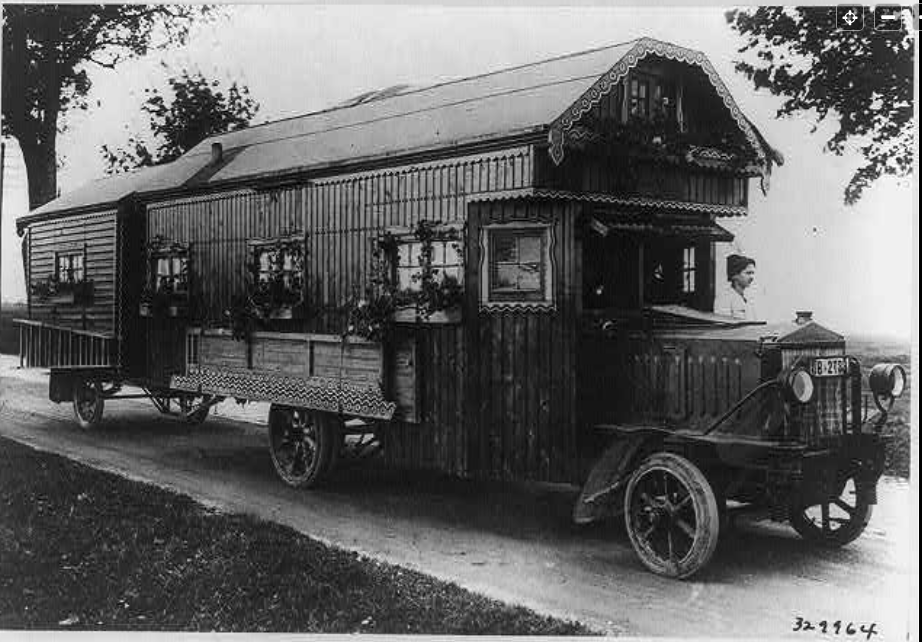

Posted By: Paul - Tue Jan 19, 2021 -
Comments (3)
Category: Business, Retailing, Motor Vehicles, Travel, Candy, 1920s
Follies of the Madmen #495
These tires only available in Lilliput.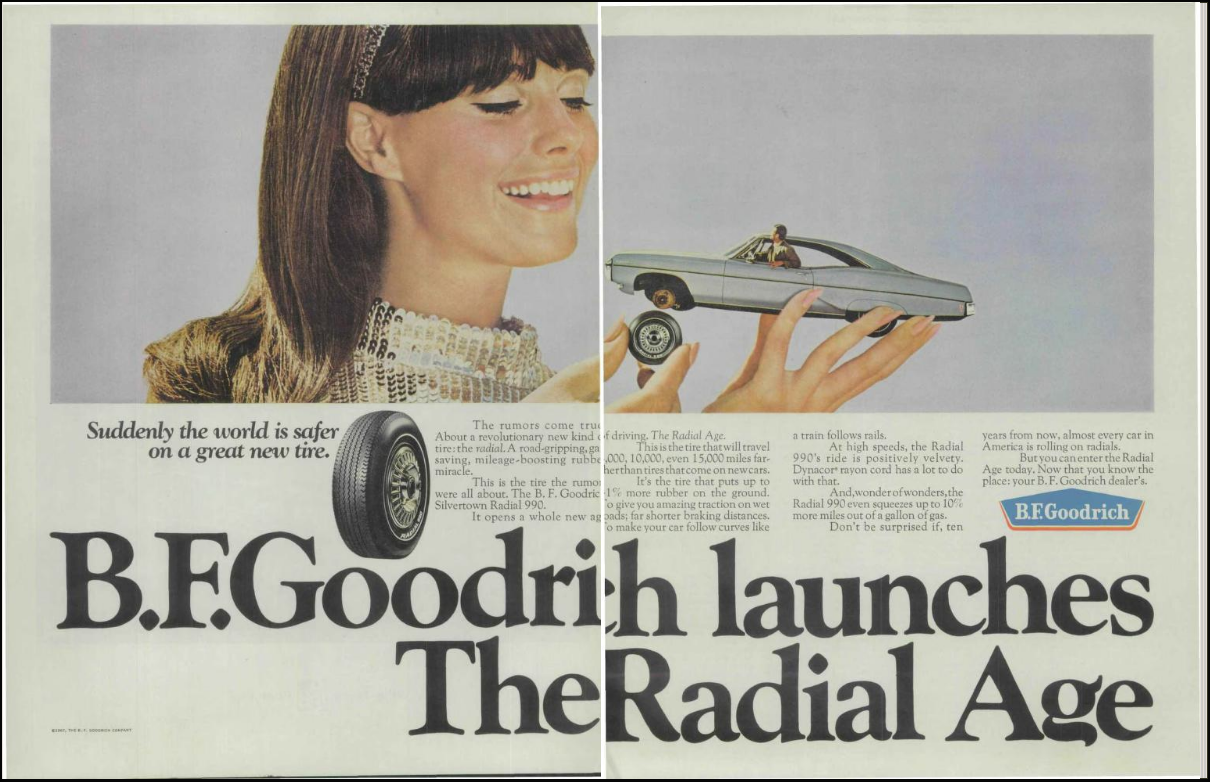
Posted By: Paul - Tue Dec 08, 2020 -
Comments (4)
Category: Business, Advertising, Giant People in Ads, Motor Vehicles
Caccolube
Or, how to ruin an engine, courtesy of the OSS."When circulated through this system, the compound fuses and welds the moving metal parts of the machinery. Slipped into a truck, the Caccolube takes effect after the truck has been driven from 30 to 50 miles. It reacts so thoroughly on pistons, cylinder walls and bearing journals that the vehicle is not only thrown out of service but the engine is destroyed beyond repair."
This lethal "lube job" replaced the original effort using sugar, when it was discovered that sugar actually promoted better engine performance in the vehicles of that era.
Source: Jack Anderson, "Rare arsenal used by spies," Santa Cruz Sentinel, Mar 9, 1987.
Posted By: Alex - Sat Sep 12, 2020 -
Comments (1)
Category: Motor Vehicles, War, Weapons, Spies and Intelligence Services
The World’s Fastest Shed
Posted By: Paul - Wed Sep 02, 2020 -
Comments (4)
Category: Eccentrics, Motor Vehicles, United Kingdom
1969 Design Proposals for NYC
A 200-MPH transit system, a dome over Times Square, and other daydreams.Source.
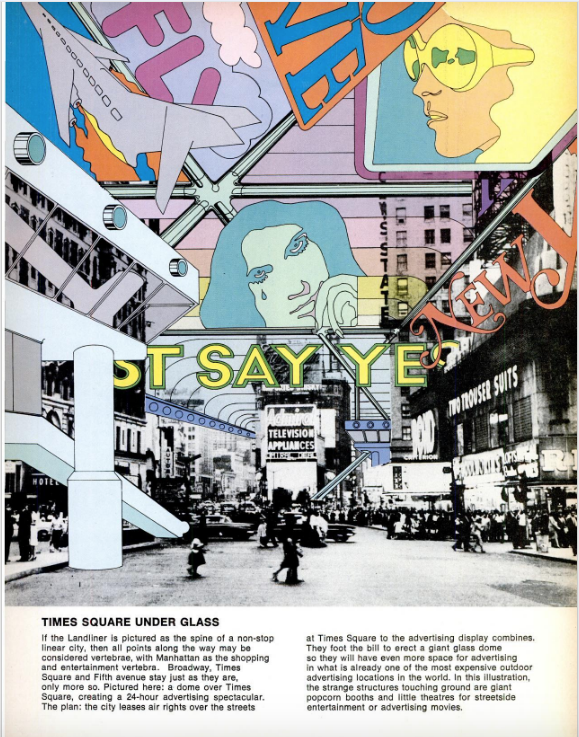
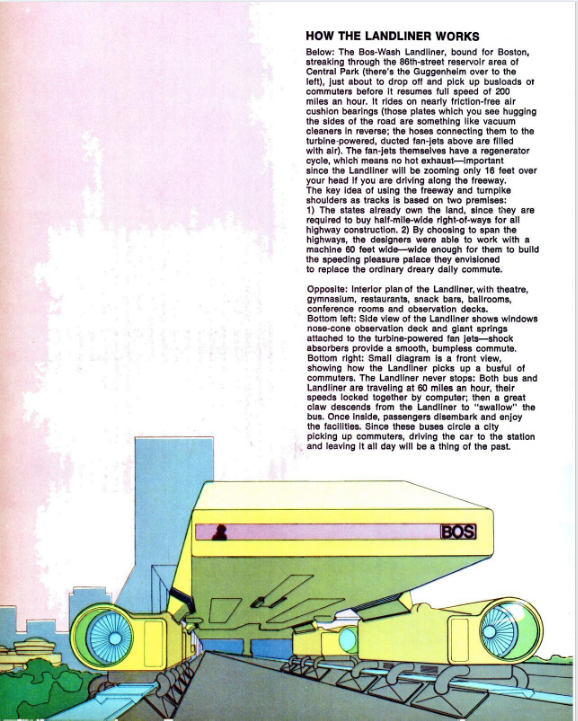
Posted By: Paul - Wed Aug 26, 2020 -
Comments (3)
Category: Motor Vehicles, Urban Life, 1960s, Yesterday’s Tomorrows

| Who We Are |
|---|
| Alex Boese Alex is the creator and curator of the Museum of Hoaxes. He's also the author of various weird, non-fiction, science-themed books such as Elephants on Acid and Psychedelic Apes. Paul Di Filippo Paul has been paid to put weird ideas into fictional form for over thirty years, in his career as a noted science fiction writer. He has recently begun blogging on many curious topics with three fellow writers at The Inferior 4+1. Contact Us |




